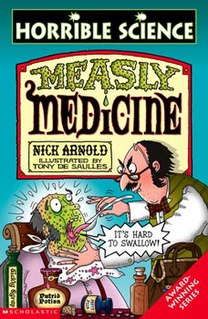It is proposed that this article be deleted because of the following concern: Fails WP:NEVENT. Was obviously written to promote the exhibition. If you can address this concern by improving, copyediting, sourcing, renaming, or merging the page, please edit this page and do so. You may remove this message if you improve the article or otherwise object to deletion for any reason. Although not required, you are encouraged to explain why you object to the deletion, either in your edit summary or on the talk page. If this template is removed, do not replace it . ContentsThe article may be deleted if this message remains in place for seven days, i.e., after 17:35, 28 July 2018 (UTC). Nominator: Please consider notifying the author/project: {{subst:proposed deletion notify |Horrible Science of Submarines|concern=Fails [[WP:NEVENT]]. Was obviously written to promote the exhibition.}} ~~~~ |
This article needs more links to other articles to help integrate it into the encyclopedia .(January 2014) (Learn how and when to remove this template message) |
Horrible Science of Submarines is a 2013 exhibition, based on the Horrible Science series of books by Nick Arnold. It was held at the Royal Navy Submarine Museum in Portsmouth. [1] Entrance was free, [2] and the exhibition lasted from Nov.6 2013 to Apr.1 2014. [3]

Horrible Science is a similar series of books to Horrible Histories, written by Nick Arnold, illustrated by Tony de Saulles and published in the UK and India by Scholastic. They are designed to get children interested in science by concentrating on the trivial, unusual, gory, or unpleasant. The books are in circulation in 24 countries, and over 4 million books have been sold in the UK alone.
Nick Arnold is a British writer of science books for children. He is best known for the long series Horrible Science, illustrated by Tony De Saulles, and the short series Wild Lives, illustrated by Jane Cope. His other works include some published under the name Robert Roland.

The Royal Navy Submarine Museum at Gosport is a maritime museum tracing the international history of submarine development from the age of Alexander the Great to the present day, and particularly the history of the Royal Navy Submarine Service from the navy's first submarine, Holland 1, to the nuclear-powered Vanguard-class submarines. The museum is located close to the former shore establishment HMS Dolphin, the home of the Royal Navy Submarine Service from 1904 until 1999.


